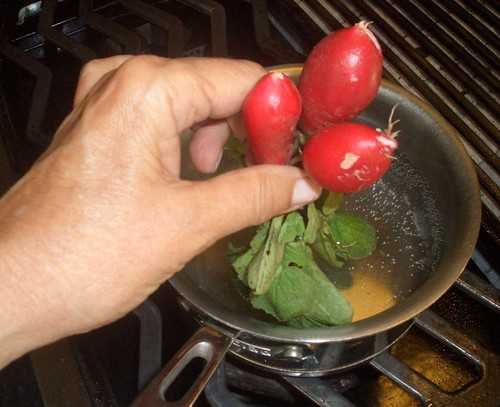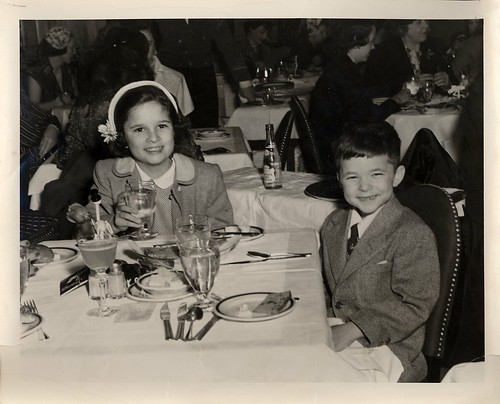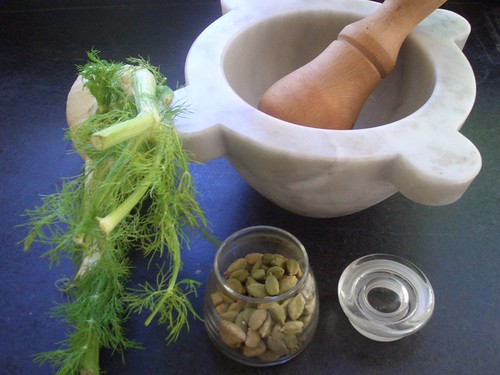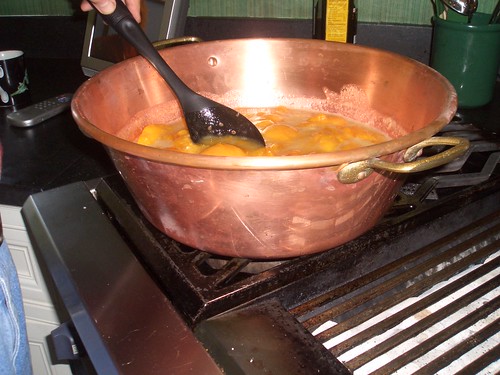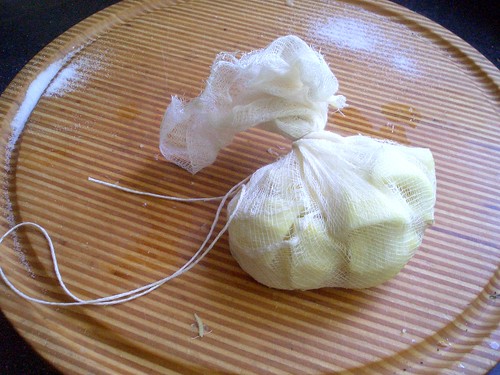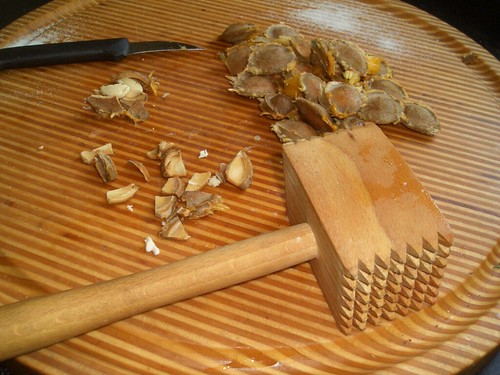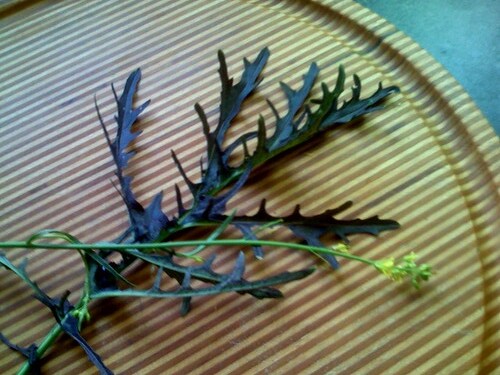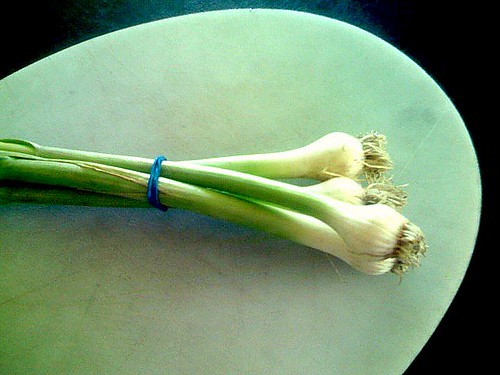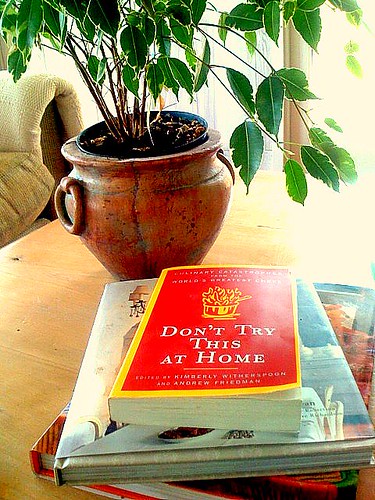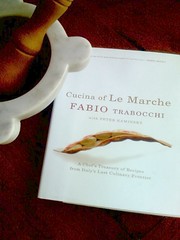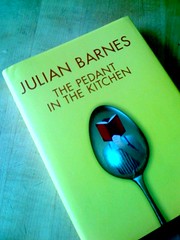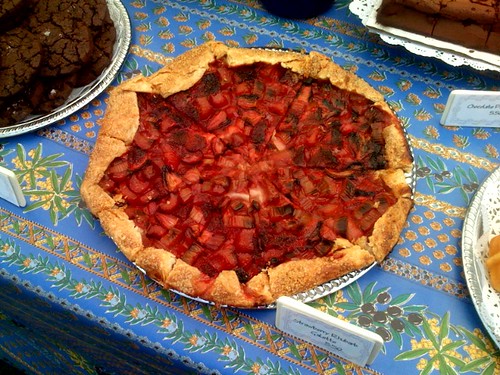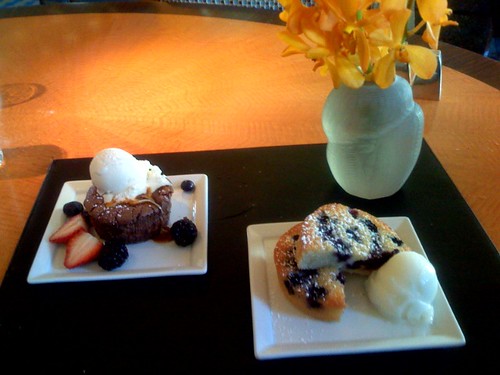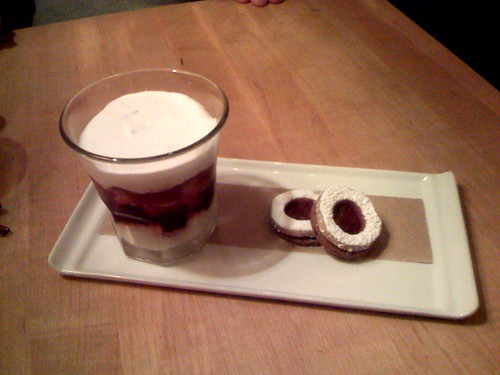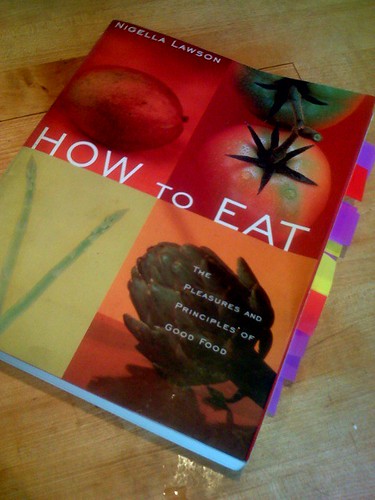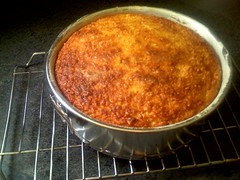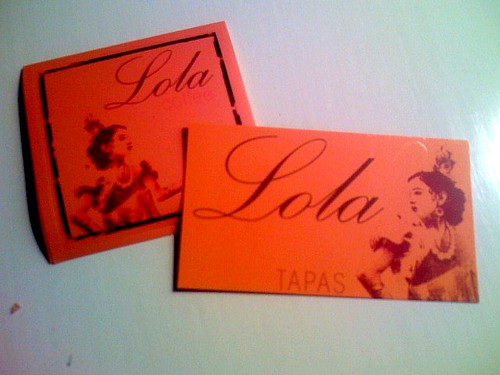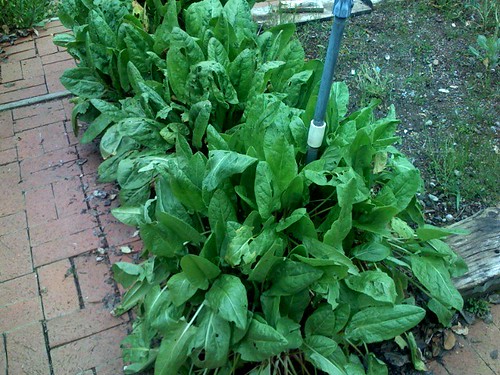Since I knew they were comin' I baked a cake.
And because they were coming from across the country (and, in the case of one of them, from across a lot of years) I wanted it to be wonderful. When I want wonderful, I frequently turn to Nigella.
Nigella Lawson's Clementine Cake
from "How to Eat"
4-5 clementines, about 1 pound total weight)
[
Margin Note: Since clementines' brief season had passed, I used tangerines. Nigella notes that you also can use an equal weight of oranges]
6 eggs
1 cup plus 2 tablespoons sugar
2 + 1/3 cups ground almonds
1 heaping teaspoon baking powder
Put the clementines in a pot with cold water to cover; bring to the boil and cook for two hours. Drain, and, when cool, cut each fruit in half and remove the seeds.
Then chop everything finely -- skins,pith, fruit -- in the processor (or by hand, of course).
Preheat the overn to 375-degrees F. Butter and line an 8-inch springform pan. [
M.N.: I buttered but did not line. I should have lined.]
Beat the eggs in a large bowl. Add the sugar, almonds and baking powder. Mix well, adding the chopped clementines. Pour the mixture into the prepared pan and bake for an hour, when a skewer will come out clean; you'll probably have to cover the cake with foil after about 40 minutes to stop the top burning. [
M.N.: My cake was done in a little over 50 minutes. Start skewer-testing early.]
Remove from the oven and leave to cool on a rack -- but in the pan -- until cake is completely cold. I think this is better a day after it's made, but I don't complain about eating it any time.[
M.N.: I think it's a *lot* better the day after it's made, which inspires me to get it done ahead, saving both prep and clean-up time the day of a dinner party.]
Nigella calls this "the easiest cake I know." Hmmm. I think Sylvia Vaughn Thompson's
Fresh Ginger Cake might be easier -- it's certainly quicker -- but I'll concede that the clementine cake is even more delicious. Almost as delicious as spending a long food-and-wine-filled evening with old and new friends.
Postscript:Why no photo of the unmolded cake? Because I sent it to the living room but stayed behind in the kitchen for a few minutes to brew coffee. My plan was to join everyone, take a quick photo and then give each of them a thin, thin slice (it's a very rich cake)accompanied by a dab of lightly sweetened whipped cream and a big spoonful of raspberries.
There were eight of us. This cake easily serves 10-12. Coffee in press-filter carafes takes only a moment to make, but by the time I rejoined the party, Someone had whacked it into eight big pieces and served all but mine.
I try -- in this day of moderate eating and controlled sugar consumption -- not to force feed a guest a horse-choking-size piece of cake. No one, however, complained. And there were no leftovers.






